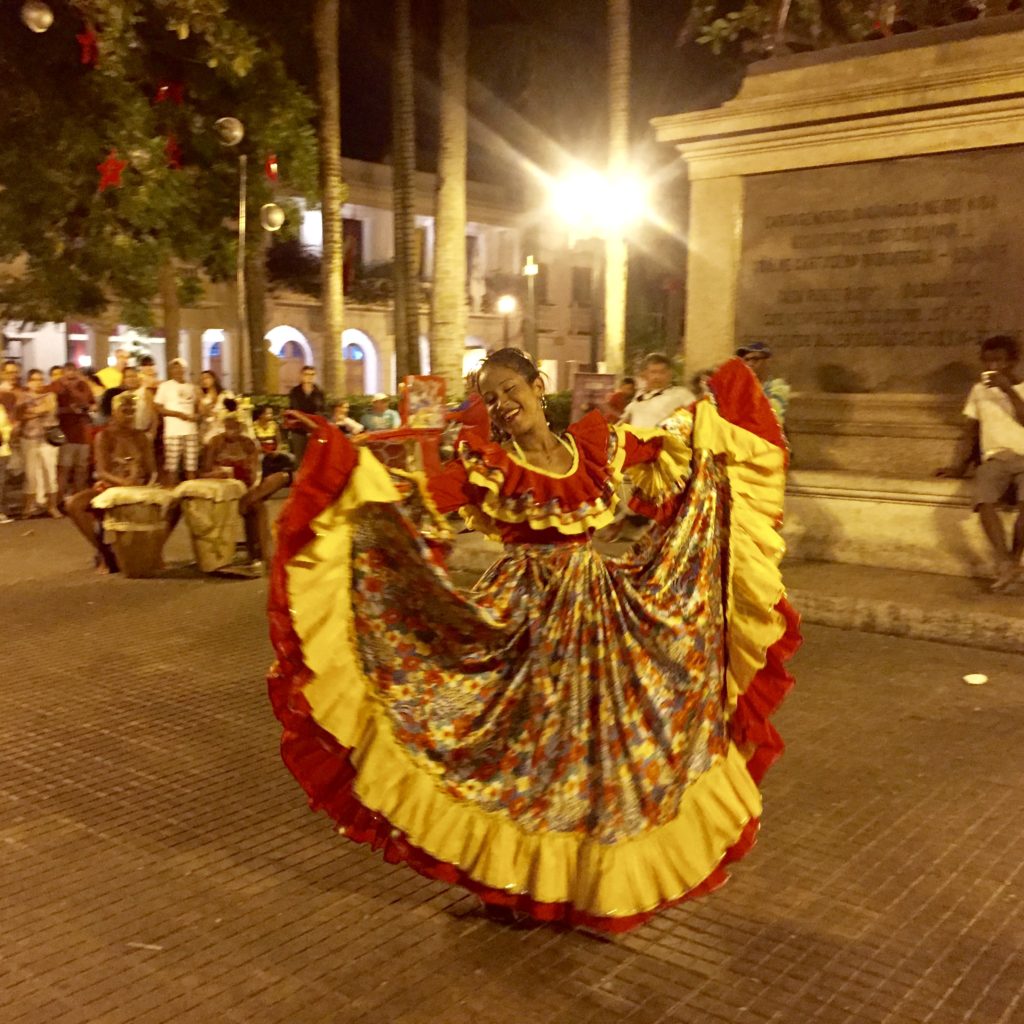

While there are various forms of Cumbia across Latin America, its origins are believed to come from the coasts of Colombia and Panama. Colombian Cumbia is considered the most traditional form and is the country’s national dance. With African influences, it also has European and Indigenous elements, representing a courtship.
While there is no single definition of the exact history of Cumbia, theories tend to point towards its reflection of a life of slavery, colonialism, and revolution during Colombia’s war of independence and formation of the Republic in the early 19th Century. The link to slavery can be observed by the small steps in the dance with the weight mostly in one foot, which some argue represent the ball and chain worn around the ankles of slaves.

While the Carribean coast is more traditionally associated with Cumbia, I learnt the dance in Medellin which has excellent academies due to the University’s folkloric dance programme. Santo Baile dance school offers Cumbia classes as well as other latin dances, and excellent service.
Cra 42 # 33b sur – 68 Envigado,
2do piso (encima de D1)
Envigado, Antioquia
Tel. +57 305 3264549
Behind every dance, there is a story. An upcoming book will take you dancing from New York to Buenos Aires, immersing you in the local culture, history, and happiness with every dance step. Aliénor Salmon is represented by Gregory Messina of the Linwood Messina Literary Agency.